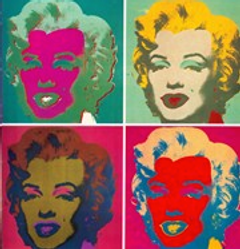Dramatic Contexts
By Kate Garrett
Historical Portraits.

Portraits Timeline.
Portrits have been around for most of time, the acient egyptians painted/carved pharaohs on the walls of the pyramids or sculpted them out of stone and other materials.
Whereas Grecians tended to work to create portraits in sculpture form.
Romans sculpture of the emperors were made out of bronze or marble.
In the early renaisasnce period the majority of sitter were important religous figures as many tried to copy the works of Leonardo da vinci and Michelangelo.
Renaissance art introduced several new ideas into painting. These included technical concepts, such as linear perspective, light and shade (chiaroscuro and sfumato) and 3-D modelling, as well as narrative concepts, such as humanism. These ideas provided portrait artists with greater resources, which soon led to a noticeable rise in the quality of Renaissance portraits. (Visual-arts-cork.com, n.d.)
During the 16th century, a clear hierarchy of paintings was established by the main arts academies - based on a picture's perceived 'inspirational' qualities. Five genres were ranked, as follows: (1) Historical, religious or mythological pictures (containing a 'narrative' or 'message') were seen as the worthiest genre, followed by (2) portraits, then (3) genre-paintings, that is pictures of everyday scenes, (4) landscapes and finally (5) still life paintings. Because of this, many portrait artists tried to enhance the standing of both their painting and their subject by giving their portraits an historical, religious, or mythological setting. (Visual-arts-cork.com, n.d.)
Portraiture greatly expanded as a genre during the 18th and 19th centuries. This was due to several factors, including: the universal use of oils and canvas; the increase in commerce which in turn created a large group of wealthy middle-class businessmen and landowners; and the use of portraiture as a way of making a permanent visual record of individuals and families. (Visual-arts-cork.com, n.d.)
Towards the begining of the 20th century photography and film developed which impacted the amount of classical portraits created greatly as many were more intresed in new techniques and their outcomes..
Post-war developments have also been influenced by additional art materials, computer-based media and new forms of printmaking, permitting new works in acrylics, aluminium paint, collage form, silk screen prints, computer prints and mixed media, as well as a variety of new sculptural media. (Visual-arts-cork.com, n.d.)


Figure 3.0
Khufu, 2nd Pharaoh of the 4th Dynasty
Figure 3.1
Djoser, 1st Pharaoh 3rd Dynasty

Figure 3.2
Psammticus, 1st Pharaoh of the 26th Dynasty



Figure 3.3
Portrait of Antonine youth Sotheby's
Figure 3.4
Cast of Old Fisherman Ashmolean Museum
Figure 3.5
Cast of Kore Ashmolean Museum

Figure 3.6
Bust of Roman Emperor Vitellius Modern copy of an antique head

Figure 3.7
Head of Emperor Constantine Part of the colossal statue of the Roman leader Constantine


Figure 3.8
The Arnolfini Portrait
Figure 3.9
Saint Catherine of Alexandria


Figure 3.1.0
Girl with a Pearl Earring
Figure 3.1.1
Portrait of Pope Innocent X


Figure 3.1.2
Self-Portrait: Torn Between Music and Painting
Figure 3.1.3
Portrait of Queen Marie Antoinette



Figure 3.1.4
Marilyn
Figure 3.1.5
Self Portrait with Cat & Monkey
Figure 3.1.6
Study After Velazquez's Portrait Of Pope Innocent X
My Project is to recreate a historical painting so to start me off I have created a diagram of areas of portratior I could look into. From here I have created a rough timeline of portraits so I have an idea of what time period I would like to look into and how it varieys from the time and what art movement was happening as to how it influences the work.